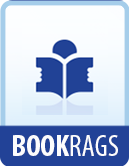This little book, The Looking Glass, which relates the early life of William Mulready (1786-1863), was issued in facsimile by Mr. F.G. Stephens in 1885, with an interesting account of its history. Therein Mr. Stephens wrote: “Mr. Linnell told me that the cuts to the once well-known Nongtong Paw [Vol. 6 of “The Copperplate Series;” see above], The Sullen Woman and the Pedlar [Vol. 2 of the same series], Think before you speak, and The King and Queen of Hearts, were designed by Mulready.” We thus discover who was the illustrator. My own feeling is that the plates came first and Lamb’s verses later.
The King and Queen of Hearts cannot be said to add anything characteristic to the body of Lamb’s writings. But its discovery is historically valuable in establishing—by the date 1805 on the engraved title-page—the fact that before the Tales from Shakespear, which are usually thought to be the brother and sister’s first experiment in writing for children, Charles at any rate had tried his hand at that pastime. The King and Queen of Hearts thus becomes his first juvenile work.
* * * * *
Page 404. POETRY FOR CHILDREN.
This little book, attributed on the title-page merely to the author of Mrs. Leicester’s School, was published in two minute volumes at three shillings by Mrs. Godwin in 1809.
Robert Lloyd, writing from London to his wife in April, 1809, says of Charles and Mary Lamb: “If we may use the expression, their Union of affection is what we conceive of marriage in Heaven. They are the World one to the other. They are writing a Book of Poetry for children together.” Later: “It is task work to them, they are writing for money, and a Book of Poetry for Children being likely to sell has induced them to compose one.” Writing to Coleridge of the Poetry for Children, in June, 1809, Lamb says: “Our little poems are but humble, but they have no name. You must read them, remembering they were task-work; and perhaps you will admire the number of subjects, all of children, picked out by an old Bachelor and an old Maid. Many parents would not have found so many.” Charles Lamb, by the way, was then thirty-four, and Mary Lamb forty-four. In sending the book to Manning, Lamb said that his own share of the poems was only one-third.
The little book seems to have been quickly allowed by its publisher to pass into the void. Possibly the two-volume form was found to be impracticable: at any rate Poetry for Children disappeared, many of its pieces at various times reappearing with the signature Mrs. Leicester in The Junior Class-Book (two pieces), in The First Book of Poetry (twenty-two pieces) and The Poetical Class Book (three pieces), all compiled by William Frederic Mylius, a Christ’s Hospital master, and published by Mrs. Godwin. Hence the extreme rarity of Poetry for Children, which seemed to be completely lost until, in 1877, a copy was found in Australia. Two or three other copies of the English edition have since come to light. Mylius used also the frontispieces to the two volumes. As I have not seen all the editions of these compilations, it is possible that my figures may not be complete.




